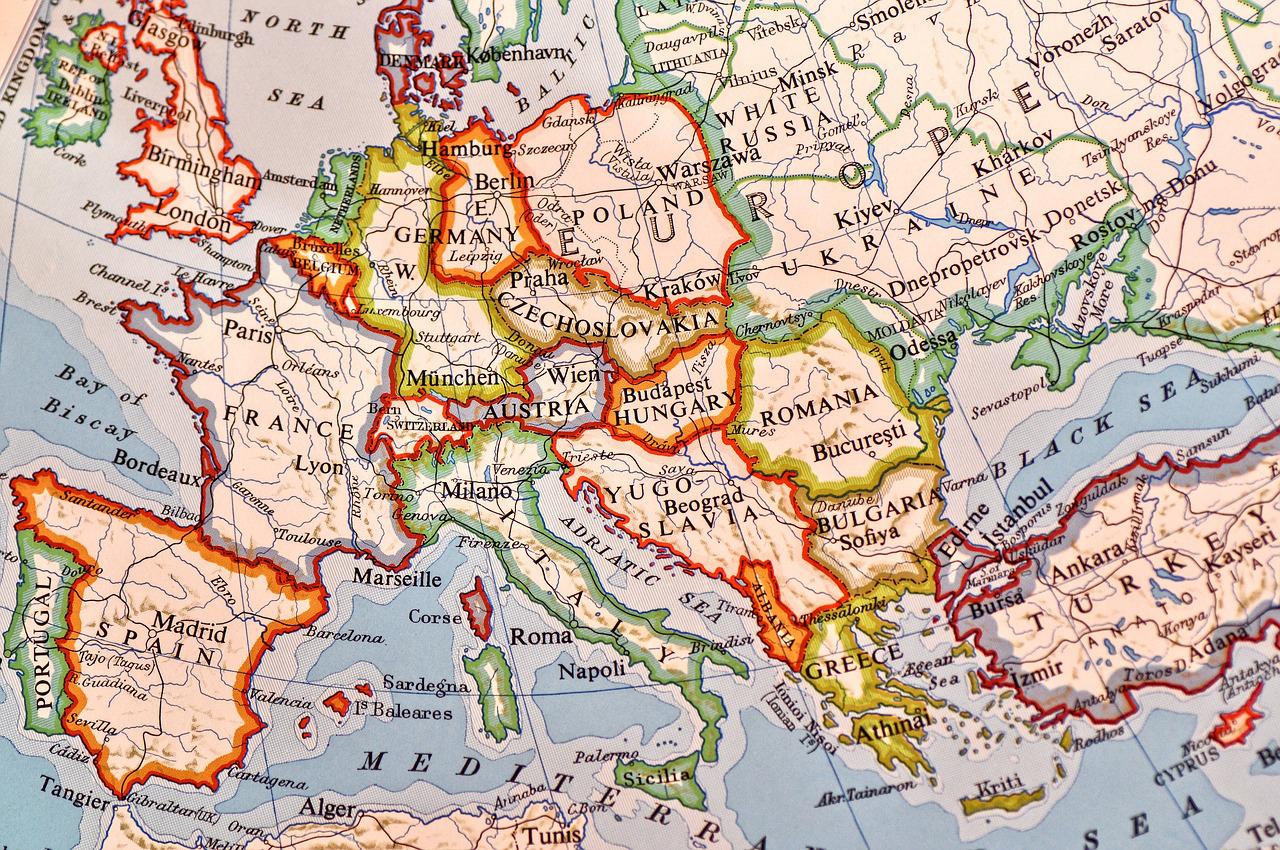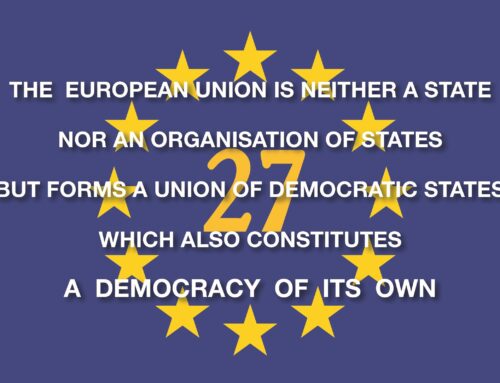This article was first published by Global Policy Institute (London).
Despite the apparent acceptance at international level of several linked, though in some cases contradictory, norms, namely the (civic) nation-state sovereignty, the territorial integrity of nations-states, unitary and federal governance structures, and the right of self-determination, these norms are frequently challenged. The artificiality of such norms – confirmed only by the flimsy apparatus of international law, based on historical agreements between states – is proof only of the need for on-going rational ahistorical analysis. This view is not to discount the need for such norms at a global level, nor to decry the use of force to challenge such norms, but to avoid the level of hypocrisy shown by large member states in applying the current historical norms. Such a new flexibility, together with other global developments, is likely to lead, eventually, to a new world order.
Introduction
Wars awaken popular feelings of nationalism, ethic, religious, and civic. Populist governments augment and intensify these feelings by propaganda messaging. There are many historical examples and the current situation in Ukraine demonstrates the situation in an exemplary manner, though it also has shown how civic nationalism may subdue ethnic nationalisms.
This paper is not devoted to a specific analysis of Ukrainian nationalisms or the link with territorial integrity, though it is interesting to compare these with ethnic nationalisms which emerged in the Balkan conflicts of the 1990s. This paper is a wider introductory theoretical analysis, intended to highlight how recent are internationally accepted norms of self-determination, civic nationalism, nation-state sovereignty, and territorial integrity. These historical norms should not be regarded as unchallengeable, despite there being numerous deviations from them across the world, and contradictions between the norm of self-determination and those of territorial integrity and nation-state sovereignty.
Some Historical Background
For most of human history these norms have not existed. Historically, it is sometimes argued that the notion of a world of individual nation-states arose, originally, from the Westphalian settlement in 1648, which ended the Thirty Years’ War. This suggestion is grossly misleading. Essentially, the Treaty of Westphalia ended the religious and political dominance of the Holy Roman Empire, ushering in the idea of sovereign principalities/kingdoms (though not necessarily territorially-based or with fixed borders). Other secular empires and kingdoms continued to struggle against each other, with frequently shifting territorial boundaries. Ironically, within the empires which persisted and shifted after 1648.
It was not until the 19th and 20th centuries in Europe, accompanying the various agricultural and industrial revolutions that populist, mainly ethnic, nationalisms developed. Previously, in most cases national identity was province of the ruling elites. For the majority of the populations, their identities were local and community-based. The mobilisation of the masses during the 19th and 20th centuries was by the elites, seeking mobilization for either war or revolution. Hence, the current proliferation of nation-states is of more recent vintage, a product of the period roughly between the mid-19th and the mid-20th century, and indeed beyond with the founding of the UN. It was also over this 100-year period that linearly-drawn boundaries began to be applied, intensified by the scientific approach of the industrial revolution (Goettlich and Branch 2021).
The weakness of the UN is a modern demonstration of the effective irrelevance of the independent nation-state model. Although there are 12 countries having populations of 100 million inhabitants, even they have little say in terms of global political and security issues. Moreover, many states are very small. Indeed 120 of the 231 nation-states in the world have less than 5 million inhabitants.
However, the above account is not meant to be an advocacy of large nation-states in terms of governance. Indeed, many of the large states are either officially or unofficially federal in terms of governance structures, and there are several confederal structures involving nation-states of various sizes; the EU is perhaps the best-known example, though others include ASEAN, the African Union, etc. Small may well be beautiful in terms of nation-state governance internally, though it leaves the plethora of small countries open to being ignored at the international level.
The Nature of the Territorial Boundary Problem
The problem of territorial boundaries is both theoretical and practical. In theoretical terms the problem derives from the Enlightenment’s superficial rationality approach (noted also by Weber) of abstracting worldly phenomena into pure forms and attempting to universally apply such forms empirically (this could be called the Platonic error of creating “ideal” forms).
This statement needs unpacking. In practice territorial boundaries are not necessarily fixed in physical terms. Moreover, the boundaries do not conform to straight lines drawn on a map. Unfortunately, this has led to notable errors, such as in the drawing of the boundaries marking the partition of India in 1946. Relevant community, ethnic, religious, language and political factors were all ignored in the haste to draw lines on a map. Another notable example were the maps drawn prior to the establishment of the state of Israel in 1948.
Ironically, the maps drawn up during the British Mandate contradict the extreme Zionist narrative that Palestine was virtually uninhabited. The maps effectively laid claim to specific delineated land areas of the complete territory, enabling their “legitimate” sale/transfer to the Jewish National Fund and the Palestine Jewish Colonization Association (Gavish 2005: 95-136). Cartography is not the only means to delineate nation-state boundaries, though it is perhaps the most pernicious because of its quantifiable arbitrariness and its inflexibility.
Generally, the physical boundaries may be agreed between the two contiguous nation-states involved, though disputes over their location are common and may last for centuries. There will usually be manned crossing points where documentation permitting travel across the boundary will be checked by officials on both sides for validity. In the case of air travel, the boundary and checkpoints will be artificial and within the territory of the nation-state. Mountains provide a problem for two-dimensional cartography; where the French and Spanish Pyrenees begin, and end, is effectively unresolvable in winter. Maritime boundaries are, of course, even more problematic to define, to navigate, and to enforce. The disputes in the South China Seas are an example. Rivers may be used as boundaries, though in many cases in East Asia urbanisations may develop in a linear fashion along the rivers. This may also be the case elsewhere, as along the Mississippi in the US.
This current artificial international collection of 193 nation-states, within the UN, is assumed to be in stable equilibrium, at least in theory. In practice it is always in a state of flux. Since the loose conceptualization on nationalism and nation-states held by most “elites” until around the middle of the 19th century – accompanied subsequently by the decline of empires, and the territorial impacts of two world wars and their post-war adjustments – there has developed a concept of the “civic state” and its ownership has been adopted by the masses. It is this identification of the “people” with the civic nation-state, continuously reinforced by the uses of education, laws, culture, religion, language, and a variety of national symbols and myths, which renders problematic any clear perception of how nation-state boundaries arose and are maintained. Federal political structures and more seriously confederal structures, such as the EU, are under constant stress, with fissiparous pressures frequently surfacing. Some federations may be better at managing the inevitable tensions than others, with informal linkages providing a resilient fabric of support.
In contemporary international relations the principal unit of analysis is assumed to be the bounded civic nation-state. Less salience is attached to communities, ethnicities, languages, religions, customs, which may extend beyond borders. It is as if the civic nation-state category can circumscribe all the communities involved by fitting all within an inviolable cartographic space. Further, a singular political authority, sovereignty, may then be arbitrarily assigned at the level of these nation-state cartographic spaces. In some cases, even in unitary states, degrees of devolved stated power may be instituted. Nonetheless, in these democratic polities the contemporary political status quo within the cartographic space is rarely able to be successfully challenged by those held inside this space, and never should it be challenged from outside. There are exceptions of amicable transformations, such as the separation of the Czech Republic and Slovakia, but in our post-Second World-War era of nation-states, the continuation of the status quo is vehemently maintained.
Fiat (state) currencies are often used to represent a monetary boundary that is used to define the nation-state, though often the currency may be acceptable outside that nation-state. Language is also used as a designation of the language-originating nation-state, though obviously language can again be used beyond that nation-state.
International Implications
The historical tendency since the Second World-War, as may be seen from the proliferation of member states of the UN, has been to accommodate the applications from a plethora of nation-states during this period. Over the past 50 years or so this increase in the number of nation-states has been accompanied by the growth of regional and supra-regional organizations, often modelled loosely on the European Union, though less formally integrated. Among these are the African Union, Mercosur (South America), and ASEAN. There are also regional groupings within the UN structure. For further information on this development, and potential future evolution, see Lloyd (2019) and Lloyd and Dixon (2022).
The operational elements of these organisations cover economic and trade cooperation and integration, monetary cooperation, and joint political cooperation. What this development indicates is that the nation-state is insufficient in terms of scope and reach in many policy areas, despite insistence of the value of “sovereignty”. Strong collaborations between nation-states are becoming essential. Inevitably, some pooling of sovereignty (and even surrender of sovereignty in monetary and trade integration, such as in the case of the EU) is occurring in the modern era.
It might be argued that the roughly 150-year paradigm of the nation-state era, intensified from 1945, may not be the permanent arrangement of global affairs that it appears to be at present. Although territorial boundaries may not disappear, in many respects from the viewpoint of political, economic, and monetary policies, the boundaries will come to be recognized as requiring to be increasingly permeable, as indeed, in practice, they are now. Moreover, the era of cosmopolitanism, global communications, and digitization, is likely to provide opportunities for further collaboration and integration, especially at supra-regional level. Medium-sized nation-states like the UK, having severed itself from the EU, may find difficulties in integrating more widely in the global system, itself becoming increasingly regionalized.
This evolution of the global collection of individual nation-states will be path-dependent, so that any attempt to forecast in any detail is likely to fail. Yet it is possible to suggest that, in the broadest historical terms, the current international structure of nation-states, with tightly bounded sovereignty and static territorial boundaries, may revert to a more loosely governed oligarchic consensual settlement. This is more likely to evolve via the increasing development and integration, within and between, a limited number of supra-regions. The structure of the UN will also need to be adjusted to reflect this new reality.
Postscript: Large Cities and Non-Territoriality
It is not necessarily the case that territorial boundaries are required for conceptualizing populated spaces. It may be argued that this is the case with the world’s large and capital cities.
Clearly, cities are physically located in nation-states, however it may be argued that they can be viewed, in existential cultural terms, as existing independently of the nation-state in which they are located. Indeed, even in normal usage, one is more likely to say I am going to Rome, rather than Rome, Italy. In some cases, in the modern world, one would say I am going to Dubai, rather than the UAE, or Hong Kong rather than China. Singapore is a clear example of a self-governing city-state. it could be described as being both a city-state and a nation-state. These city destinations are for all intents and purposes city-states. City-states have existed for millennia, Athens being an obvious ancient example. Historically, therefore, cities have been viewed as independent population enclaves, existing within global space, and in existential cultural terms they still are so considered.
Interestingly, under the Palestine Mandate, ignored by a Zionist Israel, Jerusalem should be an international, independent city, under the auspices of the UN. At some future point in time, its status should revert to this independent status, accommodating all religious and nationalist objections, but not accepting any vetoes. It would then become a perfect example of the irrelevance of territorial boundaries at nation-state level.
References
Gavish, D. (2005) The Survey of Palestine Under the British Mandate, 1920-1948, Routledge, London.
Goettlich, K. and Branch, J. (2021) ‘Borders and Boundaries: Making visible what divides’, in de Carvalho, B., Lopez, J. C. and Leira, H. (eds), Routledge Handbook of Historical International Relations, Routledge, London pp. 267-276.
Lloyd, M. (2019) The Federalist Revolution: A New Global Democratic Empire, Forumpress, London
Lloyd, M. and Dixon, C. (2022) ‘A Future Multipolar World’, Global Policy Journal, in press.







Leave A Comment